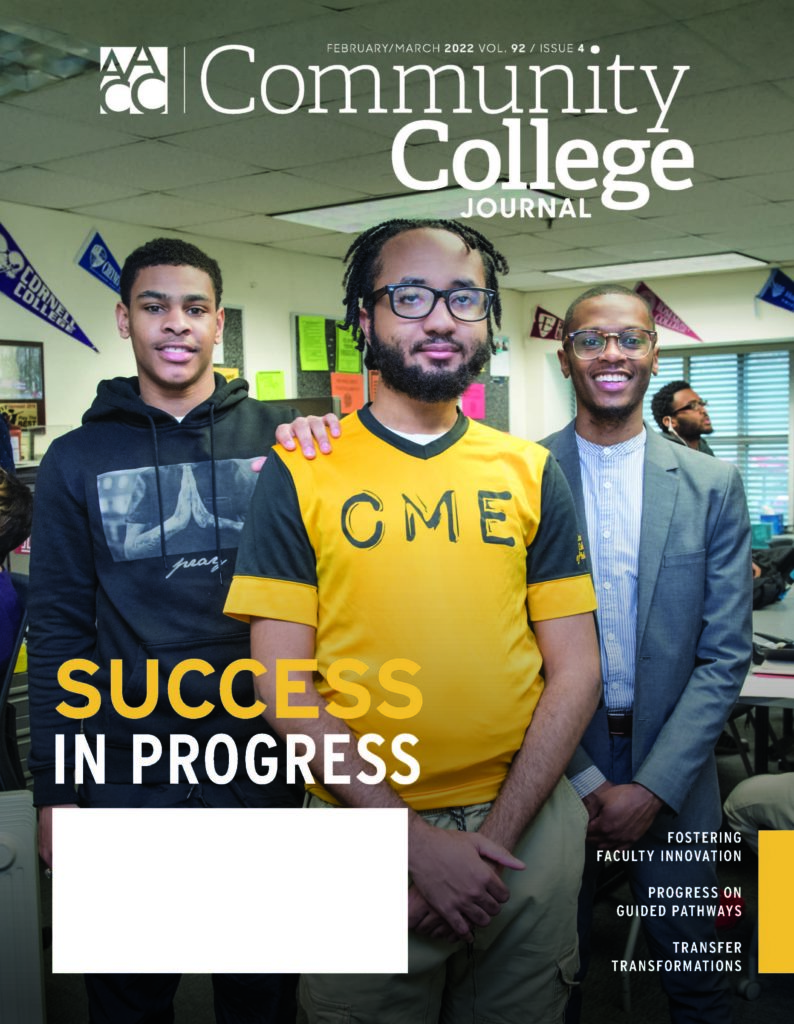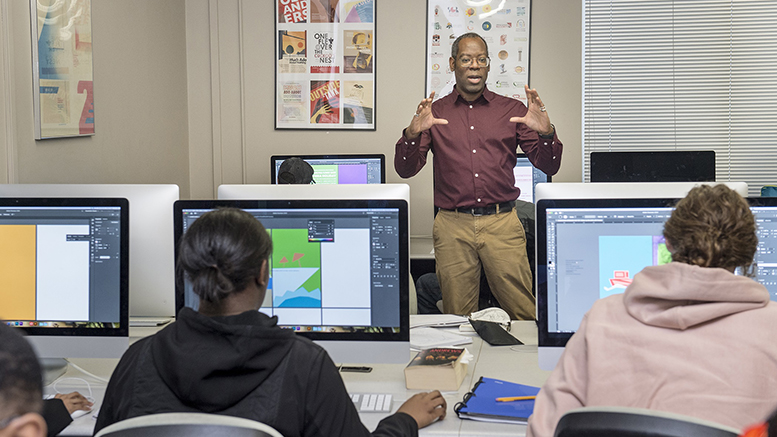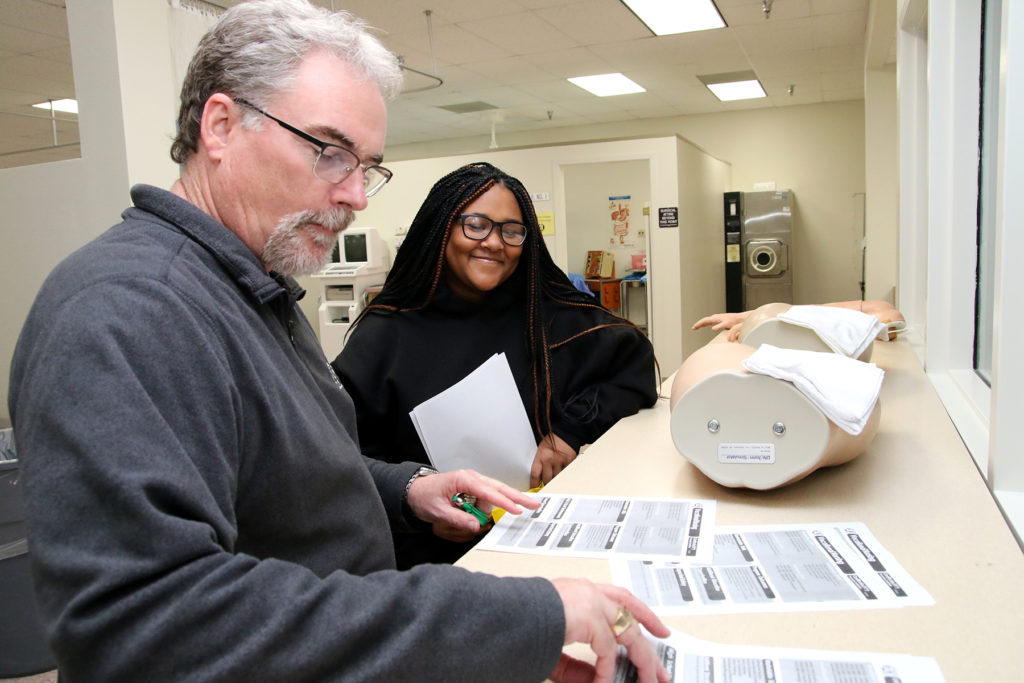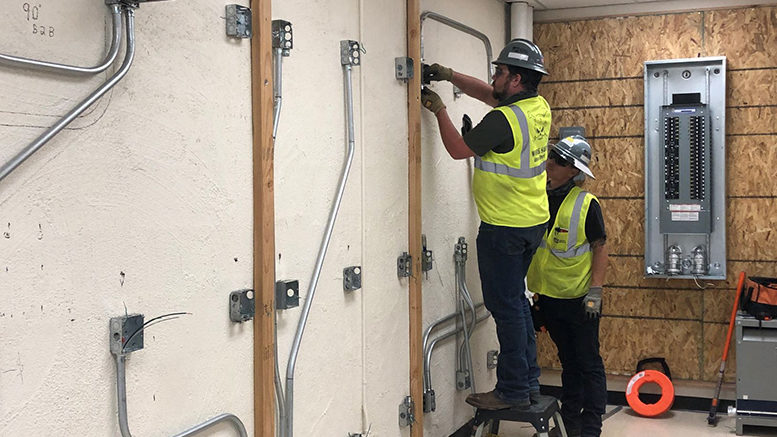Central Arizona College (CAC) is perhaps a perfect template for reform, considering its focus on Hispanic learners and large percentage of students (about 78%) receiving Pell grants. A few years ago, enrollees also endured significant credit bloat, with graduates averaging 114 credit hours when their overall course load should have been half that figure, notes President Jacquelyn Elliott.
“For us, time to degree was our biggest focus — we wanted to shorten the time to certification or the workforce,” Elliott says. “The idea was to get students through quicker without taking as many electives. Students would say, ‘Just tell us what we need to take.’ They weren’t interested in the personal development space as you see in other areas of higher education.”
This excerpt comes from the newest issue of the American Association of Community Colleges’ Community College Journal, which will soon arrive in mailboxes and online.
To meet these demands, CAC harnessed guided pathways, a program that aims to improve college completion and student success through remodeling of the student journey. The initiative supports learners in choosing a program of study, ideally resulting in transfer to a four-year school or the start of a lucrative career with a two-year degree.
CAC is now enjoying the fruits of its pathways experience, dropping its average number of completion credits to 72. The college also doubled the number of certificates and degrees for a Hispanic population taking about 20 months to graduate. Meanwhile, CAC increased its overall graduation rate from 30% in 2016 to 43% as of 2020.
“There’s a critical imperative to finish and get out into the world of work,” says Elliott. “Time is a commodity for our students. If they can do work at home while watching their kids, they’ve gained time. It’s about looking at instructional design from an equity perspective.”
The rise of pathways

Pathways reforms began gaining steam in 2015 with the launch of the Pathways Project, led by the American Association of Community Colleges (AACC) alongside national partners that included Achieving the Dream and the Center for Community College Engagement. Thirty colleges were involved in that initial iteration.
In 2017, AACC and partners unveiled Pathways 2.0. It was aimed at improving upon the existing pathways model, and it expanded the work to 13 more colleges.
As of fall 2019, more than 300 two-year institutions have committed to the pathways approach, according to the Community College Research Center (CCRC) at Teachers College, Columbia University.
Colleges that employ a guided pathways model are seeing upward trends in graduate rates, retention and credit momentum. While educational leaders interviewed by Community College Journal say their pathways missions are far from complete, they are pleased by how far they’ve come.
“We knew going in that we needed to focus on a structure for student success,” says Donald Generals, president of the Community College of Philadelphia, among the 30 pioneering institutions that joined the Pathways Project upon its 2015 launch. “That meant having a structured approach to career opportunities, with folks knowing what their aspirations are, and looking at data-based evidence as a means for decision-making.”
Building a culture
CCRC reports show the benefits of pathways practices in providing improved student outcomes. Pathways programs often encompass the use of “metamajors,” which deliver to students a broader sample of career options, along with meticulous advising to help them shape these plans.
Before embarking on its pathways voyage, Community College of Philadelphia’s three-year graduation rate hovered around 9%. That rate has since doubled, while next year’s rate is forecasted to reach 22%.
The structured pathways concept is antithetical to the traditional liberal arts approach of exploration and humanistic inquiry, Generals says. The college partnered with the Aspen Institute — another national Pathways Project partner — in mapping out concise credential trajectories aligned with both university transfer and high-value jobs.

Data collection is a focus for Generals’ staff, leading to well-paying local careers in health science, automotive technology and the culinary arts. Through this data-intensive approach, the college studied how to parlay non-credit areas like welding into stackable credits and a direct pipeline into talent-seeking industries.
“It wasn’t an easy transformation at first — the idea was to create structures around programs as opposed to courses,” Generals says. “People lost the coveted courses they loved to teach, but overall, we’ve had enough champions of the program to mitigate any issues.”
Results support the college’s decision, adds Generals. Improved graduation rates are bolstered by fall-to-fall persistence of 51% in 2019, up from 49% in 2016. (Retention rates dropped to 45% during the pandemic year of 2020, a figure consistent with national trends.) Learners taking at least 24 credits during their first year ticked up from 2.1% in 2016 to 3.3% in 2019.
Case by case
A case-management approach marks one of the noteworthy features of the pathways program at Texas’ Paris Junior College (PJC). Students are assigned to a coach at the point of admission, with academic milestones tracked throughout their career.

“At the time we joined pathways (in 2017), our enrollment had started to decline,” says President Pamela Anglin. “We saw pathways as an opportunity to do something special for our students, and get them onto a path where they completed sooner.”
PJC learners are now moving on after taking an average of 70 credit hours, an improvement from the 81 hours they departed with pre-pathways.
Faculty also created a program map that identifies marketable skills, whereas a simple course list comprised the college’s degree plan before pathways was enacted. While pathways does not currently track individual students upon completion, PJC is planning to begin that process in spring, with a focus on high-demand regional jobs in industrial maintenance, mechatronics and welding.
“What we’re doing now is reviewing our program maps — we had an economic development consultant look at those maps and match them with regional job data,” Anglin says. “We’ll be looking at marketable skills and jobs that have been changed by the coronavirus. We have to update those skills to where they’re relevant in today’s marketplace.”
On the equity side, PJC is dealing with a five-year decrease in male student enrollment, especially in the white male cohort. Attracting those students means, among additional efforts, altering marketing materials to emphasize young men.

